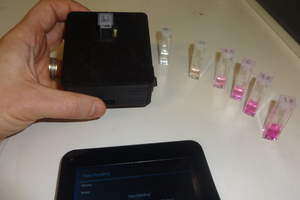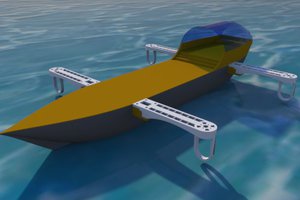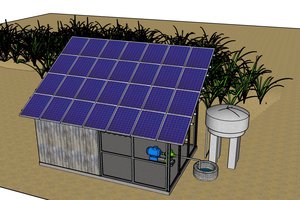The developing world remains plagued by lack of access to safe drinking water. Although many low-cost methods have been developed to treat contaminated water, low-cost methods for water-quality testing are necessary to determine if these appropriate technologies are needed, effective, and reliable. This paper provides a methodology for the design, development, and technical validation of a low-cost, open-source (OS) water testing platform. A case study is presented where the platform is developed to provide both the colorimetry for biochemical oxygen demand/chemical oxygen demand and nephelometry to measure turbidity using method ISO 7027. This approach resulted in equipment that is as accurate, but costs between 7.5 and 15 times less than current commercially available tools. It is concluded that OS hardware development is a promising solution for the equipment necessary to perform water quality measurements in both developed and developing regions.
- For more information on design and instructions, click here.
Build Instructions:
Solder the components of the AdaFruit shield and LCD following the tutorial on Adafruit's website. Test if all is correct with the LCD by running the AdaFruit code on the same tutorial page.
Connect the two LEDs, the LCD and the sensors to the Arduino Fio as shown in the schematic. Upload the firmware code to the Arduino and test whether everything is working correct. Important: to compile the firmware, you need the LcdMenu and DuplexFrequencyCounter libraries from another repository.
3D printing:
In case you experience extensive warping (layers coming apart from each other), you can try to print the case in two parts, using separate models: the test vault with the sensors on the one hand, and the box for the LCD with the Arduino Fio, on the other hand.
Layout:
When putting in the box, cut 3 PCBs the size of 200x350mm and solder each LED on a PCB with the encoder sensor looking at it (so each PCB will have a LED and a reference encoder). The final third encoder sensor goes on a PCB of its own. The following images show the layout inside the box:
When finished, you can close the box with screws and put the printed buttons in place.
 MOST
MOST









 ken.do
ken.do
 iarakistain
iarakistain
 Michael Barton-Sweeney
Michael Barton-Sweeney
Not much detail here either. I don't trust those off-site links.